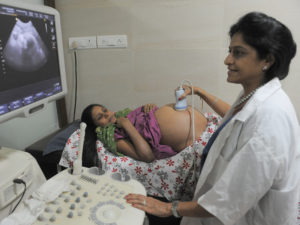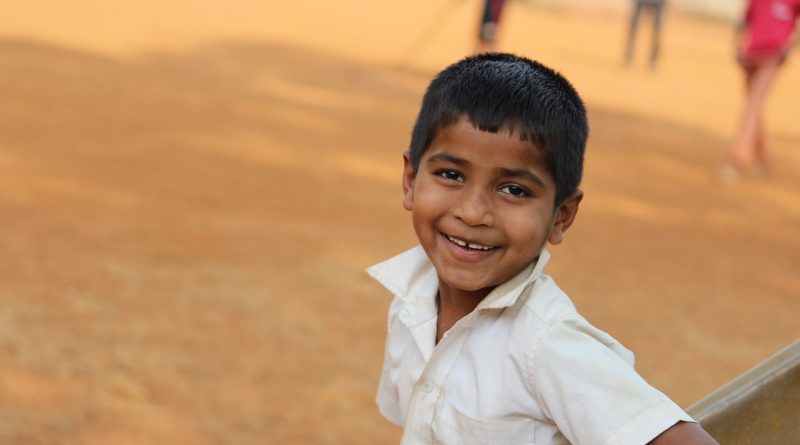IQ AND PERSONALITY OF ORPHANED CHILDREN
Today the lives and future of millions of children are in jeopardy. We have a choice to invest in the most excluded children now or risk a more divided and unfair world. The child’s optimum development rests largely on satisfaction of his needs in all dimensions during infancy and childhood. In this connection the role of parents in the personality development of the child can never be over emphasized……..
By Dr ManishaYadav

The child’s personality, growth and maturation are affected by a variety of forces like heredity, somatic, culture and particularly interpersonal ones. In this regard the relationship between the child and parents assumes central importance, as it forms a source of permanence of the child, an anchor in the stormy sea of life.
So, it is important to assess the impact of institutionalization on orphaned children (especially between 12-15 years of age) and comparing them with their counterparts staying in intact families in terms of IQ (Intelligence Quotient), adjustment covering three parameters like emotional, social and educational and personality.
The feeling of being loved (or unloved) begins at birth. Each caress and cuddle of infancy contributes to the present emotional well – being of the individual. The attachment theory states that there is formation of a strong trust bond between the child and caregivers in the first two years of the life. The bond of trust and attachment later enables the child to accept the limits and controls. Attachment helps the child to attain full intellectual potential, sort out what is perceived, think logically, become self-reliant, and cope with stress and frustration, handle fear, worry and develop future relationships.
Role of biological parents:
Love and affection from the biological parents are regarded as a foundation stone for the development of an adequate personality. Parents provide physical, psychological and intellectual environment to their offspring. Parent’s goals, values and style of life have a great effect on growing children and can lead to either admiration and imitation, or alienation and rejection. As the earliest and most durable source of security, the child’s parents are the first people with whom he/she identifies and they remain the straight influence on his/her development.
Effect of parental loss:
Death of a parent is always hurtful and harrowing. Destitution sets up a process by which the child steadily loses confidence not only in himself, but also in society. Like adults, children are grieved by the loss of their parents. This untouched situation can be very stressful as it poses new demands and constraints to children’s life.
Lack of family support makes a child feel lonely and open gateways to many concerns and fears. This stress may be evident in symptoms of confusion, anxiety, depression, and worries. The same symptoms may cause learning problems, school failure and early dropouts, poor verbal communication and may lead to the behavioral problems, such as disobedience, nail biting, thumb sucking, bed wetting, sexual problems, lying, stealing, truancy etc. Failure to recognize these symptoms will aggravate the child’s psychological problems. In addition to deprivation, pressure often builds upon these children to grow up fast and fend for themselves and that leads to premature coping and defensive ability.
Orphaned & abandoned children (OAC)
Group of such children who became orphaned or left abandoned form a group called OAC or Orphaned and Abandoned Children. Unfortunately the number of such children is increasing globally and at the rate at which the population of these orphaned children is increasing is very alarming. India tops the list with a total of 31 million orphans which adds up to the sensitivity of the matter.
The fate of such children is either to get adopted, being cared by extended families, left on the streets or being housed at institutions called orphanages now rechristened as Juvenile homes .Institutionalization is considered as the last resort for most of these OACs. Therefore, some studies have been conducted which have emphasized on improvement needed in various areas of the juvenile homes; highlighting the negative impact of early institutionalization on children. Studies have also shown that the children who are neglected and traumatized during early formative years tend to display higher levels of aggressive behaviour in later life.
The study indicates that orphans in general and those brought up in institutions in particular suffer from many social, psychological and economic problems. Most of the OACs are actually struggling because of emotional instability, cognitive development and various personality traits that have been altered because of the bitter experience. As discussed above, the intellectual development of children growing up in orphanages is thought to be at risk. Because of care in larger groups & poor environment, brain development may become delayed during the formative period after birth.

NEED FOR THE STUDY
The death of a parent permeates into all aspects of a child’s life. The child experiences a decline in health, nutrition, and psycho-social well-being. Does the very fact of being reared in an institution increase the risk of pervasive social dysfunction in adult life borne by the absence of essential qualities of parental care? Does institutional care enhance the accomplishments of any of the goals of child welfare? Is it safer, more stable or better at promoting development? Therefore, research in this area is important because the death of the parent is a risk factor for the development of psycho-social issues in children. Infact, children who experience the death of a parent are at twice the risk of suffering from a psychiatric disorder, disturbing mental health than children who have two live parents.
The fate of such children is either to get adopted, being cared by extended families, left on the streets or being housed at institutions called orphanages now rechristened as Juvenile homes. Institutionalization is considered as the last resort for most of these 0ACs. Therefore , some studies have been conducted which have emphasized on improvement needed in various areas of the juvenile homes; highlighting the negative impact of early institutionalization on children. Studies have also shown that the children who are neglected and traumatized during early formative years tend to display higher levels of aggressive behaviour in later life.
The study indicates that orphans in general and those brought up in institutions in particular suffer from many social, psychological and economic problems.Most of the OACs are actually struggling because of emotional instability, cognitive development &various personality traits that have been altered because of the bitter experience. As discussed above, the intellectual development of children growing up in orphanages is thought to be at risk. Because of care in larger groups & poor environment, brain development may become delayed during the formative period after birth.
NEED FOR THE STUDY
The death of a parent permeates into all aspects of a child’s life. The child experiences a decline in health, nutrition, and psycho-social well-being.Does the very fact of being reared in an institution increase the risk of pervasive social dysfunction in adult life borne by the absence of essential qualities of parental care? Does institutional care enhance the accomplishments of any of the goals of child welfare? Is it safer, more stable or better at promoting development? Therefore, research in this area is important because the death of the parent is a risk factor for the development of psycho-social issues in children. In fact, children who experience the death of a parent are at twice the risk of suffering from a psychiatric disorder, disturbing mental health than children who have two live parents.
The current study aims to shed some light on these issues by comparing IQ, personality and adjustment levels of children growing up without their parents in children’s home and those living at home with their parents. The focus is on whether and how these children differ from each other in terms of the above-mentioned traits, when their standards of living and quality of education do not differ, which is a unique aspect of the study.
Institutional care has been considered the last resort for caring of the OACs. However, if we improve the care in the institution and provide them with the similar facilities .The OACs may not remain as disadvantaged as they would be if left uncared for.
Who is an orphan?
As commonly understood, an orphan is a child who does not have any surviving parent to care for him or her. Various groups use different definitions to identify orphans. One legal definition used in the United States is a minor bereft through “death or disappearance of, abandonment or desertion by, or separation or loss from, both parents”. As defined by UNICEF, an orphan is a child who has lost one or both parents or whose parents have abandoned him permanently. Most accepted definition of orphan is a child who has lost both parents through death but this definition is now extended to include the loss of parents through desertion or the unwillingness or inability on the part of parents to provide care.
History of orphanage in India dates back to 1891. Hakim Ajmal Khan,an educationist, freedom fighter and a legendary Unani medicine practitioner started a shelter home for orphaned boys. Later, a branch of it was started in an old world style haveli in a Matai Mahal alley near the historic Jama Masjid.
A study by an international charity “SOS children’s village” has found that 4% of India’s child population i.e. around 20 million are orphans . The Indian data comes from 3rd National Family Health Survey (2005-06) and Indian census. This survey defined orphan as a child who has been abandoned or lost both his parents .Combined, the states of Madhya Pradesh, Uttar Pradesh and Chhattisgarh are home to 6 million orphaned children under the age of 18.
By 2021, these states will probably be home to 7.1 million orphans. The eastern region, encompassing Bihar, Orissa, Jharkhand and West Bengal, houses around 5.2 million orphans, but will likely have 6 million by 2021. Each of these regions is home to more than double the number of orphans living in either the north or west regions.
At present the survey carried out by the ministry of women and child development states that there are total of 9000 juvenile centres in the country. UNICEF estimates that more than 8 million orphaned children are institutionalized49. Many of them live in orphanage with deplorable conditions, where their most basic needs are not met. The children are often hungry, scared confused and lonely.
Most institutional orphanage are overcrowded & dilapidated, some rife with corruption, neglect &abuse. Even when managed by people with good intentions, orphanage often lacks the necessary funds, resources & knowledge to properly provide for the children in their care. The fact is, most of the children in these institutes dont stand much of a chance breaking out of the cycle of poverty & thriving as independent adults.
Causes of Orphan hood and abandonment :
AIDS: Looking at the world statistics, of the causes of orphan crisis in 2014, HIV/AIDS is the largest contributor to the orphan crisis worldwide. Every 15 seconds a child loses a parent because of AIDS-related conditions. In India as well, over 2 million children are orphaned as a result of AIDS .However the figure is higher in Sub Saharan Africa.
Poverty: Many people cannot provide food, shelter and care to the children. So these children are abandoned by parents. However, this is not due to lack of love, but due to lack of resources to care for their basic needs.
Difficult Adoption Process: There was only 1 law that clearly stated adoption procedures in India, except for the Hindu maintenance & adoption act as a form of alternative care of the child in the need of care and protection .As a result families desirous for adoption ,also do not come forward . Consequently, there has been a significant fall in the number of foreign adoptions and also the numbers of domestic adoption aren’t that encouraging either.
War and Natural Calamities: The number of children who lost parents in wars has risen. Latest example is of Syrian crisis although there are no data on the number of Syrian orphans; the fact that almost, 8,000 children fled Syria without their parents speaks for itself. The earthquake in Haiti in 2011, with the death toll of 200.000, left 300.000 children without parental care.In India almost 19 out of 29 states are facing internal armed conflicts characterized by gross violation of international human rights and humanitarian laws by both security forces
and armed opposition groups and children are attacked directly in conflicts &have been recruited by warring parties ,both state and insurgent group , as child soldiers .These children are vulnerable to abuse and exploitation .
CONCLUSIONS
Research has gone a long way in focussing and identifying socio-demographic factors linked with institutionalization, but at the same time basic known factors associated with the effects of institutionalization are ignored. This refers to orientations for children placed in such institutions.
They should be educated about foster care and their relationship to the foster care and institution they are placed in. Such orientation or anticipatory guidance helps children with their questions, legitimizes their traumatic experiences and lets them know what they could expect while they are under this particular care. In the absence of such interventions, some children struggle alone to make sense of their surroundings. Education that helps a child interpret their “world and adjust to their new environment can decrease factors such as confusion, helplessness, stress, anxiety and fear; associated with institutionalization.
Institutionalization represents an atypical rearing environment for infants and children that also increase the risk for atypical development. Thus, interventions and future research must continue to provide significant opportunities for optimal development in these children. Where adoption into stable homes is the most ideal situation, it may not be always possible. Therefore different cultures and countries must develop robust and scientifically backed interventions that work best with the particular environment.
(The author is associated with Santosh Medical College and Hospital, Ghaziabad)

